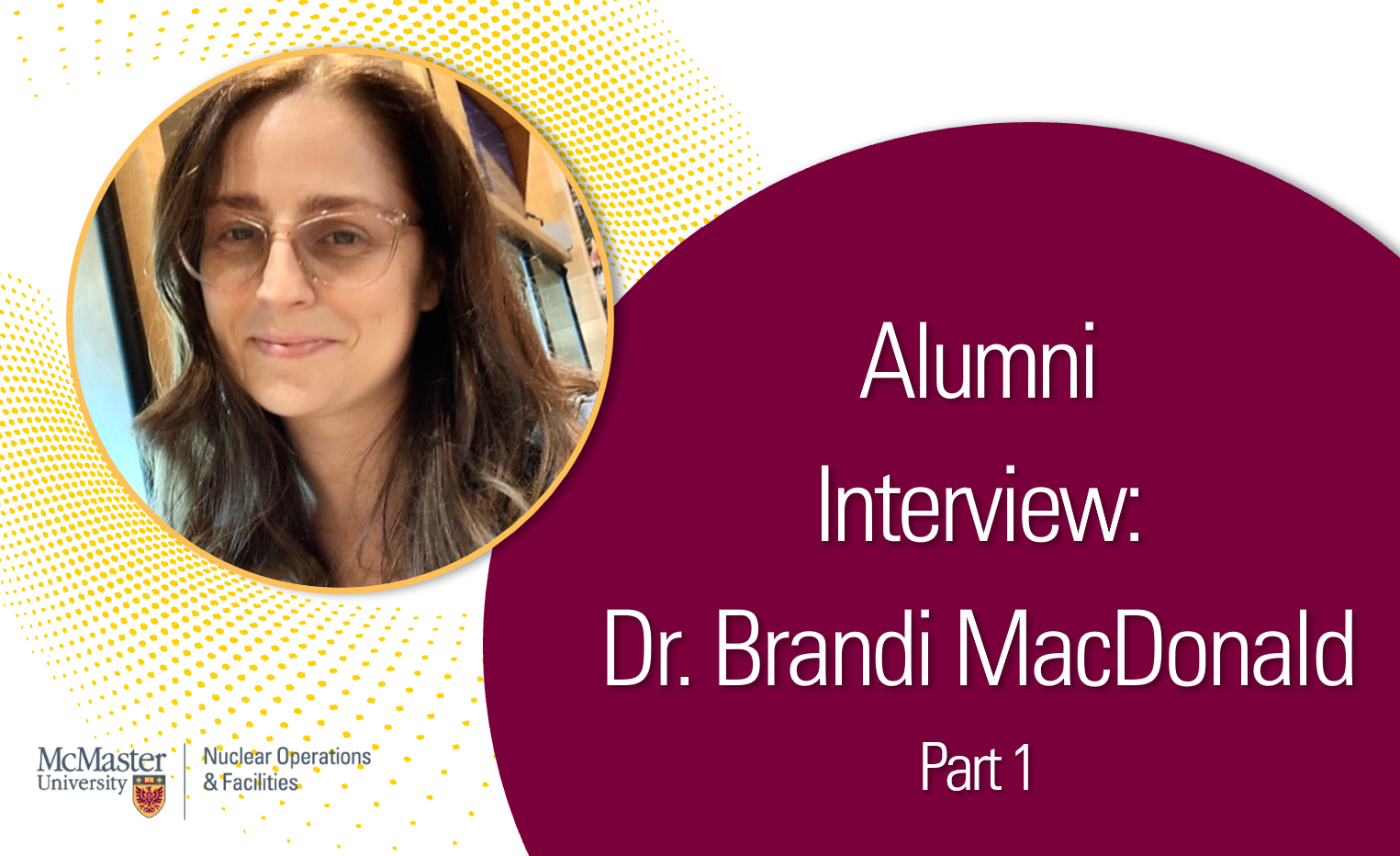Alumni Interview: Dr. Brandi MacDonald (Part 1)

You’re a McMaster graduate! Tell us about your time as a student at McMaster.
I completed my undergraduate and graduate degrees at McMaster. My major focus was archaeology, and I specialized in archaeological science. McMaster has some of the top archaeological scientists in Canada. I was very fortunate to be able to train in aspects of geoscience, physics, and chemistry alongside my archaeology training. I did my PhD on a parttime basis for several years because I was working as a research associate for Dr. Fiona McNeill. I was wearing a lot of different hats at the time, but it was fun! I finished my PhD in 2016.
What sparked your idea for The Unvarnished Truth project?
The idea for The Unvarnished Truth emerged when I was co-teaching a summer course in the medical radiation sciences program at McMaster. Students in this course were learning how to do X-rays and ultrasounds on the human body for health applications, and I thought it would be interesting to ask to students to examine ancient artifacts, like Roman pots and metal coins. I wanted students to think more widely about applications in physics, and this seeded my interest in The Unvarnished Truth project.
Can you tell us a bit more about The Unvarnished Truth project?
The Unvarnished Truth was a collaboration between the McMaster Museum of Art (MMA) and a group of researchers across Mac and at the Art Conservation program at Queen’s University. We studied the material histories of nine paintings, including a van Gogh, from the MMA permanent collection using a variety of techniques including X-ray and neutron imaging and X-ray fluorescence to learn about the artists’ choices of pigments and how the paintings were produced. We used X-ray instrumentation in the physics and medical radiation sciences programs, and even the neutron radiography suite operated by N-Ray at MNR. The MMA Director, Carol Podedworny, received funding from Canadian Heritage to produce an exhibition that showed the details of our research. The exhibition traveled to five different galleries across Canada, which was a great public outreach opportunity.
Can you tell us about an interesting finding from The Unvarnished Truth?
We discovered that a painting by van Gogh (Untitled, Still Life: Ginger Pot with Onions) had an earlier composition underneath it that was half-finished; van Gogh recycled canvases a lot in his lifetime. It looked like there might be a painting of a face underneath the finished painting.
You are an assistant research professor at the Archaeometry Laboratory at the University of Missouri Research Reactor (MURR). Can you tell us a bit about your job there?
The Archaeometry Lab at MURR is the largest dedicated archaeometry lab in the United States. We are funded in part by the National Science Foundation, and using those funds we provide collaborative support and expertise to archaeologists all over the world who are interested in geochemical provenance studies and materials characterization. Archaeologists send us small samples of ancient pottery and stone tools, and we use scientific methods to produce datasets on the elemental, isotopic, and mineralogical compositions of those artifacts. Those data are then used to reconstruct human activities in the past, like ancient trade and exchange routes, evidence for cultural interaction and migration, and the development of craft specializations such as pottery making and metallurgy.
Can you tell us about a research project you are currently working on?
I’m very fortunate to get to collaborate with some incredible researchers on several different projects and travel the world. One of the projects I’m most excited about right now is a newly-funded project in northern Australia. My colleague Dr. Jill Huntley (Griffith University, Australia) and I received funding from the NSF and the Australian Research Council to research the use of iron oxide pigments, also known as ochre, by some of Australia’s earliest inhabitants when the continent was first colonized over 50,000 years ago. We work with the Mirarr Traditional Owners, the local Indigenous community, to study mineral resources in their territory and long-term practices of rock art and cave paintings. The landscape there is so beautiful and the people are wonderful to work with.
Can you give us some insight into ochre – what is ochre and what can it tell us about human history?
Ochre is a catchall term for iron- or manganese-rich mineral pigments. These types of minerals have been used throughout human/hominid history – dating as far back as a few hundred thousand years! Most people associate ochre with famous sites like the ice age cave paintings in France and Spain, but archaeological evidence shows that ochre had many more uses in human history, including painting or decorating objects, as a component of mortuary practices, hide tanning processes, and even possibly as sunscreen and insect repellant! I use methods in nuclear sciences to better understand the composition, provenance, and material properties of ochre pigments. This helps me interpret where and why certain minerals were chosen, how they were manipulated by humans and survived thousands of years in the archaeological record.
Read part 2 of our interview with Dr. Brandi MacDonald.
Blog